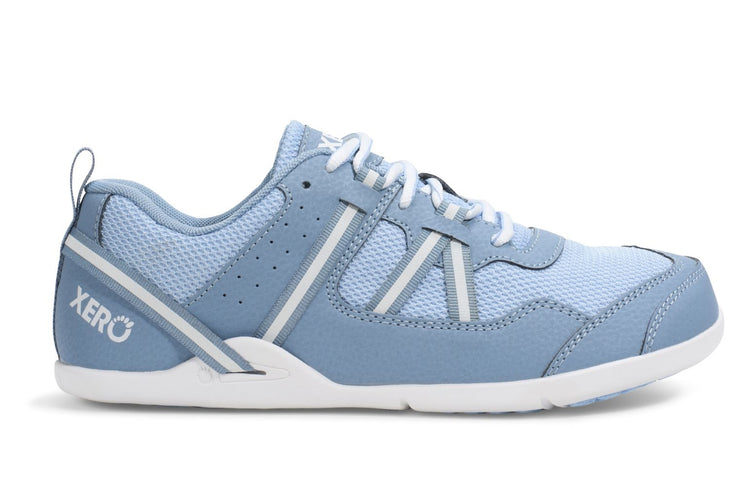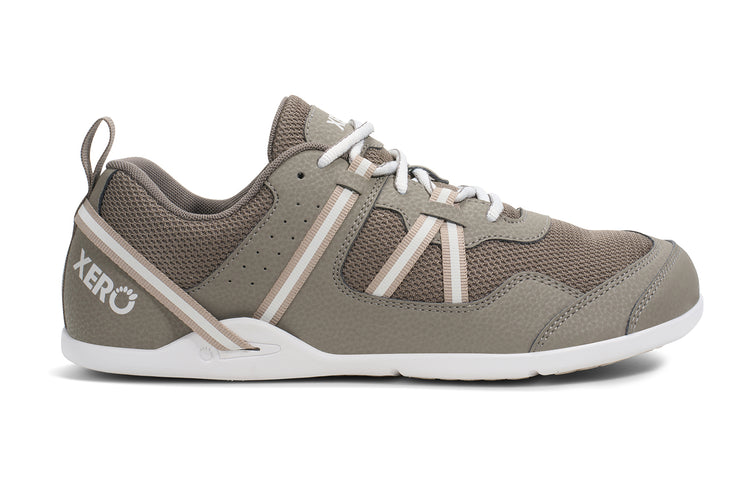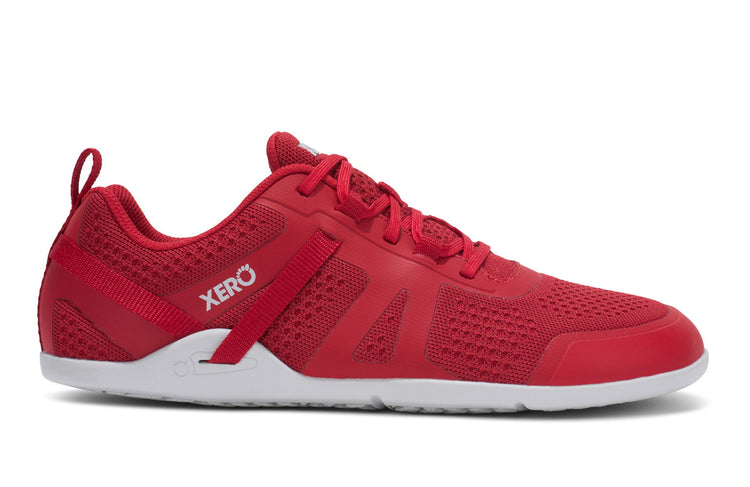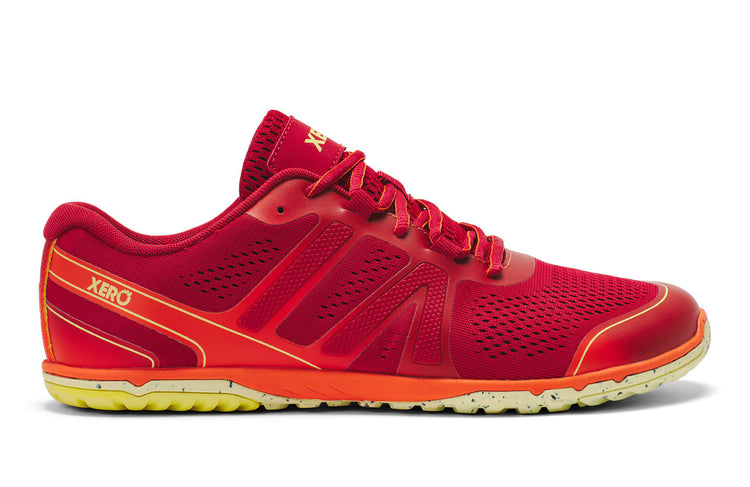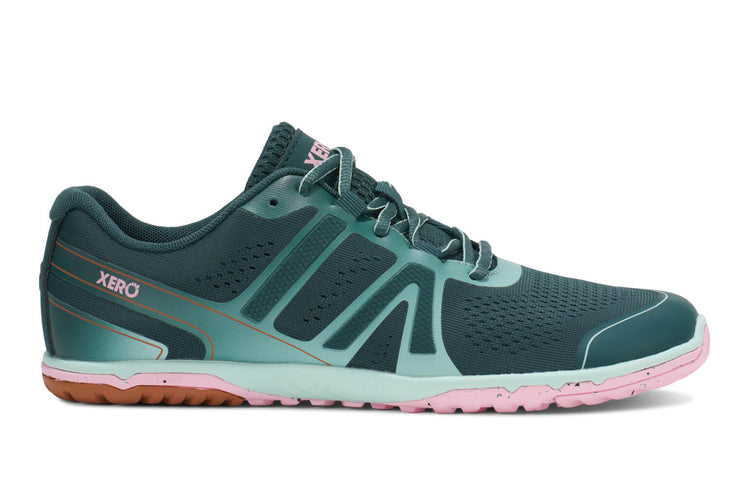latest News
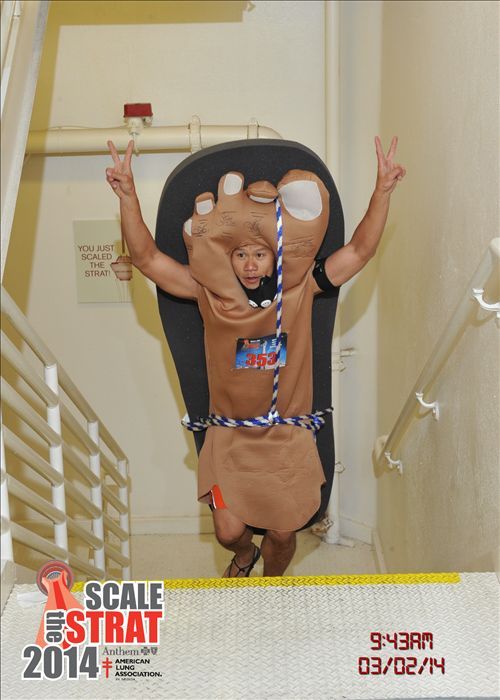
I dare you to run barefoot! Or bigfoot. Or both!
What inspires someone to take off their shoes and run barefoot?For Khanh Nguyen it was knee pain and the hope that barefoot running would help.Once he got started, in bare feet and in Xero Shoes, he was on fire. He's run 1/2 marathons, mud races and, most recently, he ran UP the Stratosphere Hotel in Las Vegas in his Xero Shoes. AND, he did it in our Bigfoot, the Xero Hero costume!Enjoy this really fun interview with Khanh, and see what motivates him to run (hint: his brother dared him!)
Can I run barefoot in the cold?
I've posted a few times about running barefoot in the cold (or in Xero Shoes)... check out this link, for example. But, inspired by a video I just received from Andreas Cederström in Sweden, I thought you would enjoy this: (Pardon the lag between video and audio... weird Google Hangout effect) You can find Andreas' video on the Xero Shoes Facebook Page So, yes, you can handle the cold if you: Warm up indoors first Adjust your running pattern -- rather than a 5 mile run, do some 1/2 mile loops (getting warm inside between each 1/2 mile and, as you get more acclimated, make slightly bigger loops) Be smart! There are no bonus points for running barefoot on the snow to the point of getting frostbite. Add some toe socks or thick wool socks and a layer of protection, like Xero Shoes. BE REALLY SMART! If you get too cold. STOP! Give yourself time to acclimate -- you'll definitely get better and better at handling the cold over time. SERIOUSLY, BE SMART!!!! (get the hint?) 32-degrees (Fahrenheit) is rarely a problem for me... but ZERO... that's a whole other story. "Dry" powdery snow is way easier to tolerate than wet snow. In other words, adjust to reality ;-) The content of this post does not constitute and is not intended to be a substitute for professional medical advice, diagnosis or treatment. Always seek the advice of a physician or other qualified health provider with any questions or concerns you may have about your health or a medical condition.
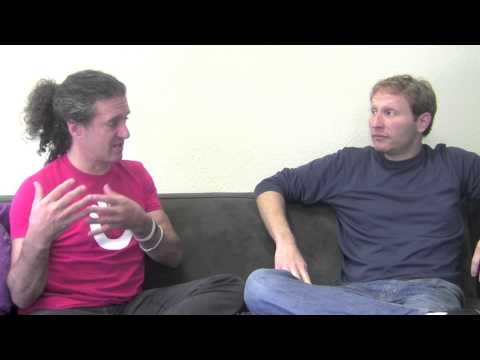
Leg length differences and barefoot running
Can you run barefoot if your legs are different lengths?This is a question I get at least once a week. And I think the answer may be surprising.Watch this video that I made with Joshua Gordon about barefoot running technique and leg length issues (and a LOT more). Then leave a comment below with your thoughts.EnjoyThe content of this post does not constitute and is not intended to be a substitute for professional medical advice, diagnosis or treatment. Always seek the advice of a physician or other qualified health provider with any questions or concerns you may have about your health or a medical condition.
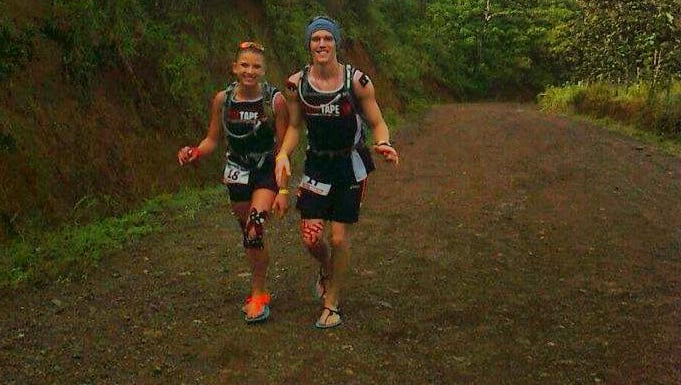
Running with the Tarahumara in Costa Rica
Want to run with the Tarahumara (the Mexican tribe featured in Chris McDougall's bestseller, Born to Run)? Well, if you can't make it to the Copper Canyon, or anywhere else for that matter, here's the next best thing. Ultra runners Jonathan Sinclair and Melissa Gosse went to Costa Rica for La Ruta 100k, arguably the hardest trail ultramarathon in the world. About a dozen Tarahumara runners were there and Jon and Mel got to spend the better part of a week hanging out and running with them -- as well as swapping huaraches and Xero Shoes, eating, drinking, and much more. They'll be sharing pictures and stories as well as giving great tips about barefoot running, minimalist running, ultramarathon training, and anything you can think to ask about. You can also click on this link to watch live video chat we had with them a few months ago.

Barefoot running on Youtube - A webinar with Jon and Mel
Think you can't run an ultra-marathon? Well, think again.Maybe your limitations aren't what you imagine them to be.I just had a great chat with ultra-runners, Jonathan Sinclair and Melissa Gosse that I know you'll love, whether you ever plan to run an ultra or not.Watch the webinar and you'll learn: Do you need to do 100s of miles per week to train? What's the roll of cross-training? How much of distance running is physical vs. mental How do you deal with the mental challenges of ultra-running What diet Mel and Jon have found that helps with their training and recovery Why they run in Xero Shoes (and when they don't!) The value of barefoot running... at any distance ... and a LOT more Share what you think of this interview in your comments, below.
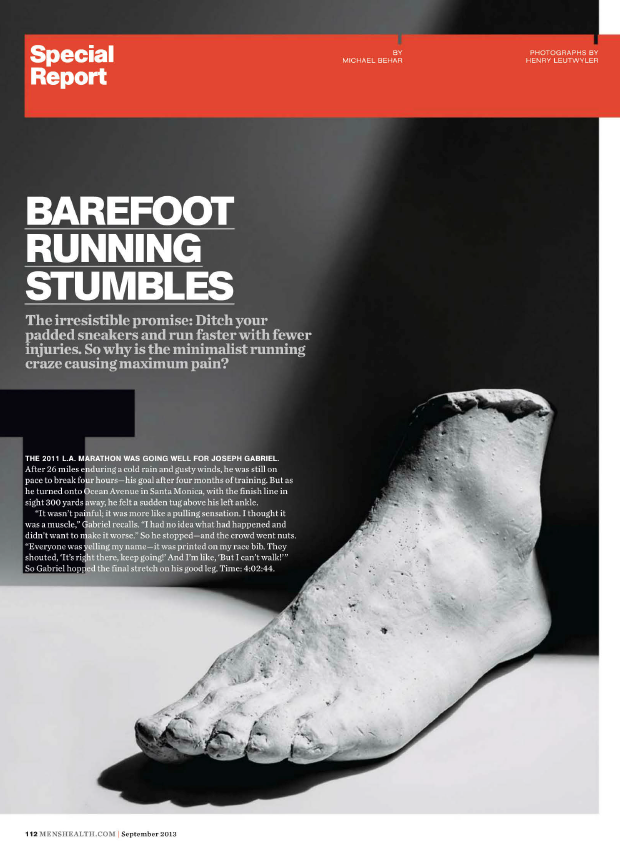
Men's Health Barefoot Running Article ... more of the same
The recent "Special Report" in Men's Health about barefoot running has inspired me to help you make a career change. You, too, can write an article about barefoot running that will appear in a major newpaper, magazine, or television show, if you do the following. Ten Steps to writing a popular barefoot running article Open with a headline suggesting that barefoot running is evil or dangerous. Ideally, use some pun about feet, or running that if the reader only saw the title, would suggest that there's no value in ever running in your bare feet. Even if your article ultimately supports barefoot running, make sure the headline suggests that taking off your shoes could lead to injury, illness, and tax audits. Follow with a sub-headline that includes a "straw man argument" about the perils of not wearing $150 running shoes.A straw man argument is one where you introduce a position that nobody holds, or nobody of any import holds, and then attack that position. For example, I don't know of any barefoot running authors or coaches that say "You'll run faster in bare feet," so the straw man argument is to say that barefooters make that claim, and then attack that claim. Similarly, a recent survey I did with barefoot coaches showed that none of us ever suggested that running bare footed was more efficient, yet many articles and even university research is now "debunking" a claim that was never made. Start with a story about someone who switched to barefoot running and got injured, and then claim that it was being barefoot that caused the injury. Ignore that 50% of runners and 80% of marathoners get injured every year. Conflate "minimalist" running with "barefoot running" and talk as if a zero-drop pair of shoes with 1" of foam is the same as running in your bare feet. Also, ignore that most "minimalist shoes" are about as minimalist as a pair of stilts. And forget that prior to 45 years ago, when the first running shoe was invented and sold, all shoes were minimalist. Quote doctors who say they're seeing more and more patients who are injured due to running barefoot. Make sure these doctors have never run barefoot in their lives. Ignore statistics: Doctors will see more patients with injuries when more people are trying something (doctors made the same claims 40 years ago when running shoes became popular and you can find articles saying that running is bad for you!). Doctors don't see patients who aren't having problems. Don't explore the doctor's statements too closely so you don't have to discover that these same doctors typically don't ask, "Are you running barefoot or in minimalist footwear," nor do they say, "Let's take a video and see if your running form could be a problem." Don't include any stories from the myriad people who've taken off their shoes, switched to barefoot, and been able to run pain-free for the first time in years. Definitely don't include stories from elderly people who have regained their balance once got out of orthopedic shoes and started using their feet again. Include some pro-barefoot info, but don't be TOO pro-barefoot. Keep the pro-barefoot info until later in the article so that if people stop reading they'll be left with the horror stories of running without motion controlled shoes. Ultimately, recommend minimalist shoes so that you don't anger footwear ad-buying companies. Suggest that switching to barefoot will be an arduous, massively time-consuming process that, maybe, will have some benefits... but probably not. To be fair, the Men's Health article is better than some. It does include some info about transitioning, even though it succumbs to the idea that you need to get a lot stronger, rather than focusing on using less effort/energy. And, I understand that if you want to sell magazines, television time, or eyeballs, it's helpful to be controversial. But there are ways to be controversial that inspire conversation and investigation, and ways to be controversial that encourages less thinking and reason. Even though, when considered in it's entirety, the Men's Health article isn't really anti-barefoot, I'm willing to bet that I'll get emails and calls from people who only read the anti-barefoot headline and first page and tell me, with a certain better-than-though feeling, "Well Men's Health said being barefoot is bad for you!" The content of this post does not constitute and is not intended to be a substitute for professional medical advice, diagnosis or treatment. Always seek the advice of a physician or other qualified health provider with any questions or concerns you may have about your health or a medical condition.
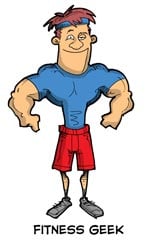
Get Stronger. Run Faster.
I'm a total fitness geek. I'm always on the lookout for a new workout, a new exercise, a new challenge. I'm also an efficiency geek. I like things that give the maximum bang for the minimum buck, if you will. And, I'm a sprinter, so I pay the most attention to anything that will make my glutes, hamstrings, calves and abs stronger. Really, all runners, not just sprinters, should do the same. In fact, all the elite runners that I know (and, here in Boulder, there are a LOT that I know), also focus on strengthening those same muscles, the prime movers and the core stabilizers. About 3 months ago, I stumbled on a workout designed by Chad Waterbury. His new workout promised big strength gains in specific body parts -- you can pick which one to focus on; my interest was glutes/hamstrings -- with ultra-short workouts that you can do at home. While I've followed Chad for a while, and like his work, I wasn't in the mood to buy his new program... until a month ago when I realized I'd been so busy at work that I had been neglecting my training. And I thought that, hey, if the program didn't work, I could get my money back anyway, so why not? Here's the short version of what I did: a) I cheated and focused on 2 body parts at once -- glutes/hamstrings and calves b) I did 2 workouts every day for 28 days, following his planb) Each workout had only 2 exercises (because I was cheating, remember?). One was a body weight exercise. The other required some kind of weight (dumbbell, kettlebell, barbell... maybe a jug of water depending on your strength).c) Each workout took about 3 minutes... so I was working out for a total of 6 minutes a day. Maybe 7 on a bad day.d) I usually did one workout when I got to my office, and one before I left... but sometimes I did my second workout at home. What happened? I got stronger every day! By the end of the 28 days, I was able to do twice as many reps of each exercise compared to day 1. My measurements changed. I'll confess: my butt got 1.5" bigger (women, don't worry, that's a testosterone thing). I'll also confess that Lena noticed, and liked the change ;-) I got faster! And at the end of the 28 days, my 100m time went down by .3 seconds... even though I've done ZERO training on the track during that time. Last week, I ran a 12.2 (I'm 51), and I know that when I spend a bit more time actually RUNNING, that time will drop... which will give me a new personal best. I now have an urge to workout that's stronger than it's ever been, which feels GREAT. I look forward to a new challenge in a way that I haven't felt it years. I know I can get even stronger. And leaner. And faster. So, I started the advanced core workout yesterday and, after a few days of rest, I'm doing another round of glute/ham work. I'm a snob You may know that I very rarely recommend other products. I'm extremely picky. Perhaps a bit snobbish, even. Well, Chad's HFT (High-Frequency Training) has my recommendation. Check it out, click on the image, below:
Pronation and barefoot running
Whenever we're selling Xero Shoes at a public event, a few people will come up to our booth, examine our barefoot sandals, and claim (with a strange tone of almost arrogance), "I can't wear these. I pronate."Sometimes they'll pull out the third party endorsement, "My doctor says I pronate." Or the less-convincing, "The shoe store did gait analysis on me and said I pronate."It's as if they expect me to say, "Oh, my gosh! That's horrible! I would never argue with an actual doctor or, even more, a 23-year old who works at a shoe store that sells 'motion-controlled' shoes! You totally can't wear Xero Shoes, then. In fact, I'm amazed you were able to walk over to our booth!"Instead, I bite my tongue for a second (so I don't say something incredibly sarcastic), and then say, Pronation is not an issue. First of all, many world-class runners pronate more than you ever will. Pronation is part of the natural spring-mechanism of the lower leg. Now, hyper-pronation (showing weakness) *might* be a problem, but it rarely is. And... When you run with barefoot style and land on your mid-foot or forefoot, it's much less likely that you'll pronate at all, since those ways of landing usually put the foot and ankle in a strong position when you land. But now I have something else to add to my "pronation isn't evil" arsenal... SCIENCE!Aarhus University in the Denmark just published a study in the British Journal of Sports Medicine called "Foot pronation is not associated with increased injury risk in novice runners wearing a neutral shoe."What I LOVE about this study, reported at ScienceDaily.com, is that it studied almost a thousand runners for an entire year. That's a good amount of data to work from.And, in short, what they discovered is that putting runners in non-supportive shoes did not increase their chance of injury (and this is with them NOT switching to a mid-foot or forefoot landing, which arguably reduces their pronation).Says Rasmus Nielsen, the PhD student who led the study, "This is a controversial finding as it has been assumed for many years that it is injurious to run in shoes without the necessary support."My addition to that would be, "Well it was 'assumed' for many years because the companies making motion-control shoes TOLD us that and we believed it."Now, admittedly, the study is not the be-all-and-end-all studies about pronation. Even the researchers say that they "still need to research the extent to which feet with extreme pronation are subject to greater risk of running injury than feet with normal pronation." And, I'm going to contact Mr. Nielsen and suggest he look at barefoot running in the future.But, I'm never one to complain when another nail is added to the coffin of, well, foot coffins ;-)The content of this post does not constitute and is not intended to be a substitute for professional medical advice, diagnosis or treatment. Always seek the advice of a physician or other qualified health provider with any questions or concerns you may have about your health or a medical condition.
The dumbest barefoot running study yet?
National Taiwan Normal University recently published a study in the journal, Gait & Posture, that might be the dumbest study ever done about barefoot running.Or, now that I think of it, it maybe it's the best.Hmmm...Let's start with the study and then I'll tell you why it's so stupid and so awesome at the same time.I don't need to bother with how the study was conducted and the typical problems with the study design, which are common to most of the barefoot running studies that have been done (too small a sample size, too homogeneous a sample size, not a good control group, lack of barefoot experience when barefoot experience is called for, etc. -- oh, I guess I did just bother :lol:).The important part is the conclusion:Habitually shod runners may be subject to injury more easily when they run barefoot and continue to use their heel strike pattern.Winner of the DUH! AwardFor those of you with some barefoot running experience under your belt, you'll immediately get the "this is a stupid study" idea.For those of you new to the barefoot thing, let me 'splain. In short, the one of the key philosophies behind running without shoes is that the typical heel-striking pattern that most people adopt when they put on running shoes, regardless of how much padding and motion stability is built into the shoes, is BAD FOR YOU.Adding the padding and motion control is attempting to address a problem that the shoe caused to begin with. It's like drilling a hole in a water pipe and then trying to patch it up with Silly Putty and saying, "See, it's fine!"Another philosophy of barefoot running is that it'll get you to stop heel-striking because, news flash, landing on your heel while barefoot HURTS.So, doing a study that says, "Running barefoot and heel-striking can be bad for you" is like doing a study that reveals, "Water is wet!"There isn't a barefoot runner on the planet who is surprised by these results.Winner of the AAAAWWWWESOOOOMMMMME AwardIronically, though, the obviousness of this study -- problems and all -- is what makes it one of the best studies about barefoot running yet.Why?Because it proves one of the core tenets of barefoot running!Okay, again, it doesn't unambiguously and completely prove it because of the limitations of the study. But by examining one of the simple ideas behind the barefoot movement and determining that all our anecdotal evidence has some scientific background, we can start to chip away at the nay-sayers who intone, "There are no studies that show that running barefoot is better for you."Ignoring the argument that there are no studies that show that SHOES are good for you, we now have a small study that backs up our claims.Winner of the That's What She Said! AwardOne other conclusion that came out of this study is that, perhaps, the advantages that barefoot running seems to provide come not from having your bare skin on the ground, but from the change in gait -- from heel-strike to, well, NOT heel-striking -- is where the real value comes from.That's the message that many of us -- including Chris McDougall, Daniel Lieberman, and Pete Larson -- have been saying. That is, "it's the form, not the footwear... but it happens that removing the footwear seems the best way to change the form... and it's FUN, feels great, and costs less."Hopefully we'll start seeing other studies that address some of the other simple claims of barefooters: Running barefoot naturally leads to a change in gait, without supplemental instruction That gait change, even in shoes, leads to fewer injuries That gait change, without shoes, leads to fewer injuries That gait change helps heal existing injuries ANYONE can run barefoot, pain-free and enjoyably. (Did I miss any?)
Barefoot Running Expert Daniel Lieberman on The Colbert Report
Most barefoot runners know Daniel Lieberman from Chris McDougall's best-seller, Born To Run.Dr. Lieberman is a professor of Evolutionary Biology at Harvard who has done some seminal research on barefoot running. One of his basic premises, from an evolutionary perspective, is that human's ability to sweat allowed us to run for long distances, letting us track down prey that overheats and tires out.While Dr. Lieberman is used to big deal academic situations, here he is on The Colbert Report.
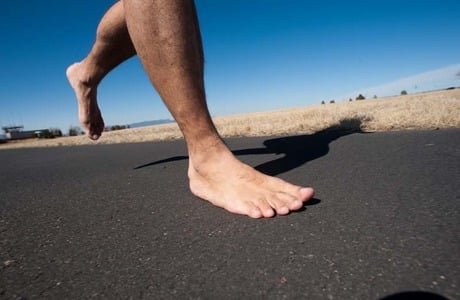
International Barefoot Running Day Donut Dash!
Join Xero Shoes for International Barefoot Running Day (IBRD) on Sunday, May 5th.IBRD is the brainchild of The Barefoot Runners Society, and the Colorado chapter has something special lined up:The 1st ever Barefoot Donut Dash! We'll start at 10am at the Xero Shoes office -- 5470 Conestoga Ct, Boulder, CO, 80301 -- with a barefoot running lesson. Whether you're brand new to barefoot, or haven't seen a pair of shoes in decades, you'll learn from and enjoy this simple class.Then, you can test your new (or improved) skills with either a 1k or 5k run/walk.Xero Shoes CEO and Masters All-American sprinter, Steven Sashen, will lead the 1k. Xero's Customer Service Manager and resident ultra-runner, Bill Babcock, will take people out on the 5k.Both runs will end about 75 meters from the Xero office... at Dizzy's Donuts, where you can get a gourmet doughnut (can you say, "Maple Bacon" or "Seriously Chocolate Cheesecake" or "Jalapeno Chedder"?!) at a special IBRD price.No experience is necessary.If you want to bring and wear minimalist shoes, that's okay (though you may learn that your minimalist shoes are getting in the way of learning to master barefoot running).Xero Shoes will also be on sale for IBRD participants.Please fill out this REGISTRATION FORM. If possible, scan/email it back to us at support@xeroshoes.com, or Fax it to 303.786.9292... or just bring it with you when you come to enjoy International Barefoot Running Day and the Donut Dash!
Does your barefoot running form look like this?
People always ask me for videos of barefoot running form.I usually avoid making them -- because the way *I* run is not necessarily the way *you* should run.That said, here's a video of Simon from Macedonia demonstrating what I think is some of the best barefoot form you'll ever see. I think everyone should be able to do this with a bit of practice. (NOT!)



